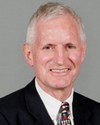Thank you, Mr. Chair.
I'm going to speak from the paper that I believe everyone has, which is the consolidated amendments, and that will be the architecture I will speak to. Then we'll have to map that into the individual motions as we move through.
First of all, we have introduced a new clause 2.1, which is essentially a definition to determine what would or would not be determined to be a phthalate, for the purpose of taking any action in this bill. I believe that came from a suggestion of one of the members. We like that idea and we incorporated that.
The next thing deals with the clause related to regulations, and the regulations in the previous version of the bill dealt with regulating a variety of areas for all three of the substances being captured in this bill, the DEHP, the BBP, and the DBP.
We are faced with the issue of already doing risk assessments on DBP and BBP and finding them non-toxic, so it would be very difficult for the department to convince the Governor in Council to add them to schedule 1 and then take action under CEPA, adding to schedule 1 under CEPA. We proposed and we've introduced a clause at the end of this package, clause 7, which would commit the ministers of health and the environment to reassess those two substances within 24 months. We're very much taking into consideration some of the commentary we heard from witnesses and members about doing cumulative assessments and also looking at exposure from cosmetics and other consumer products.
So we've moved DBP and DEHP. We cannot move to do anything with them until we have a risk assessment that says there is a risk to human health. We put that clause at the end of the revised bill.
Then moving on with what we can do with DEHP, the new clause 3 would deal with cosmetics. We would be prohibiting the use of DEHP in cosmetics, using the Food and Drugs Act. So that's what clause 3 is all about.
Moving on to clause 4, we would be looking at toys and other child care products like soothers and teethers, things that could go into the mouths of children under three. We would be using the Hazardous Products Act to prohibit those products from containing DEHP, and that is a step forward. We do that on a voluntary basis right now, and this will expand the age range and the types of products we'd be dealing with and we would put them into a regulation.
These clauses 3, 4, and 5 will all be introduced as one motion.
The fifth picks up on the desire of some commentary we heard to put in the idea of precaution, so we've made reference to the use of the precautionary principle in clauses 3 and 4. We've added a new clause 5 that uses the definition of the precautionary principle in CEPA and linked it to the actions that would be taken under the Food And Drugs Act and under the Hazardous Products Act.
So that is the package that deals with cosmetics and toys and other child care products that could be put in the mouths of children.
Then we move on to a very long clause 6, which is an approach we see as a compromise approach to deal with the issues of DEHP in medical products while at the same time ensuring we have access to life-saving medical devices that are very much needed and for which there may not be safe substitutes available.
There is a whole range of initiatives to deal with that, and we've introduced three new ideas based on the ideas that have come forward in the last couple of days. We can go into them when we get to that clause.
Then finally, the last one I've spoken to already, and that's the requirement to reassess DBP and BBP.
Thank you, Mr. Chair.





